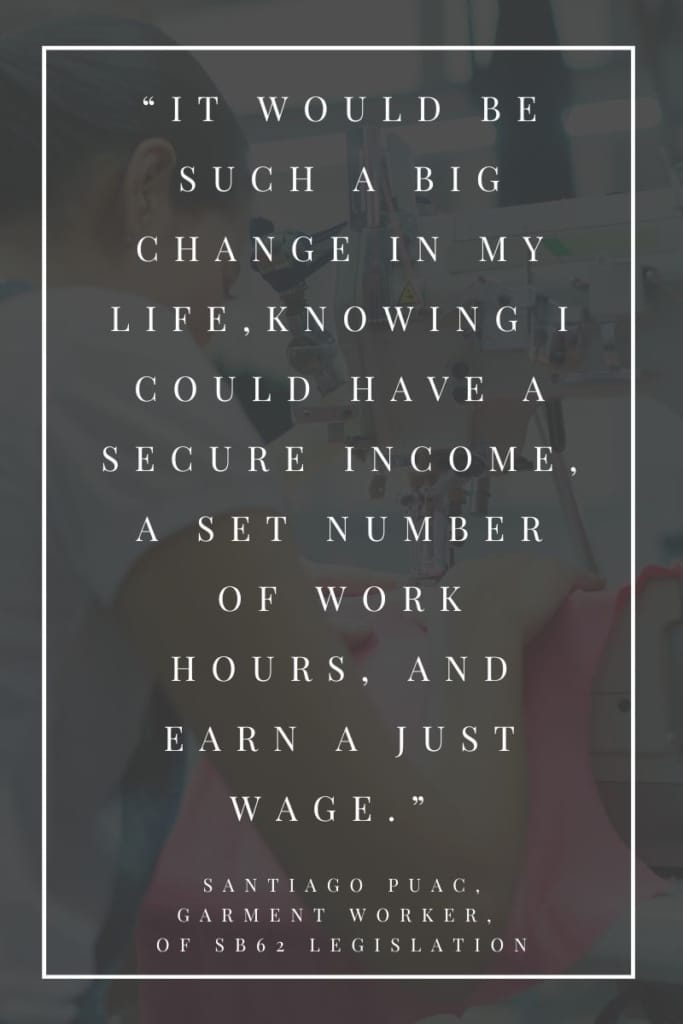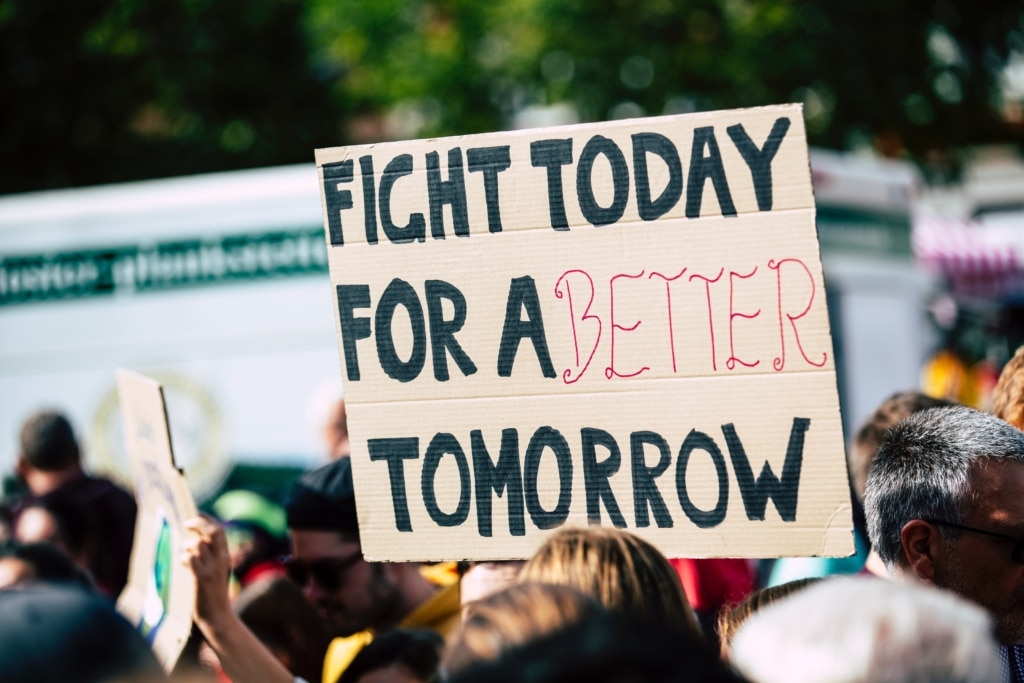How to Shop Mindfully This Holiday Season
This time of year there is often an emphasis on overconsumption, with holiday sales announcements and limited time deals







In a world where conscious consumerism is gaining momentum, concerns about ethical and sustainable fashion practices are becoming increasingly prevalent. One pressing question on consumers’ minds is why more brands don’t guarantee 100% living wages in their supply chain. It’s a valid ask, but one that requires a deeper understanding of the complexities surrounding wages and working conditions in the garment sector.
Before we delve into the heart of the matter, let’s clarify the difference between a minimum wage and a living wage— because achieving one is far easier and less impactful than the other. While the concept of a minimum wage was intended to be sufficient for a dignified life, the reality often falls far short. Let’s take the example of Georgia in the U.S., where the minimum wage is a mere $7.25/hr. In contrast, MIT’s estimated living wage for a single person with no children in GA is $17.72, a staggering difference. It becomes evident that minimum wages are woefully inadequate for meeting basic needs, let alone supporting a family, even in a developed nation. This is amplified in underdeveloped garment-producing countries. As a result, living wage calculators were designed to identify a geographically specific wage that can be earned within a standard work week, which will cover basic needs, including rent and food for a family, with additional consideration for expenses like medical costs, school fees, clothing, transportation, and emergency savings.
The garment industry operates on a global scale, and unfortunately, most garment-producing countries keep their legal minimum wages at poverty levels. The motivation behind this approach is to attract businesses to their factories by offering low production costs. Brands can produce clothing at a fraction of the cost in countries like Cambodia or Indonesia compared to countries with higher wage standards, providing a significant competitive edge.
As a result, the majority of the estimated 75 million garment workers worldwide earn less than a living wage, perpetuating a cycle of poverty for an estimated 98% of them. This grim statistic highlights the urgency of addressing the issue and finding sustainable solutions.

The challenge for brands seeking to provide living wages to their workers is twofold. Firstly, finding factories that already pay a living wage is incredibly difficult, as there are very few of them. Subcontracting further complicates matters, as some factories may make wage commitments but then outsource the work to others that do not honor these agreements. By design, brands are usually unaware when outsourcing occurs. This lack of transparency is what allows most brands to turn a blind eye to the reality of the working conditions in their supply chains, dodging responsibility. Truly responsible brands are usually small and do not have the leverage to demand supply chain transparency or living wages from their suppliers.
Even among suppliers who want to improve wages and conditions, cost is a challenge, so the efforts take time and do not happen overnight. Those efforts also rely on their brand partners support for increased prices. Meaningful reform is often hindered by large brands, who continue to demand low costs with the threat of pulling their business. Part of this ongoing price pressure is driven by continued consumer demand for low-cost apparel, which demonstrates the importance of conscious consumerism. Legislation to hold brands accountable for their suppliers’ actions is also proving crucial to driving change.
While factories paying living wages do exist, they are scarce, small, and in many cases, they are owned by the brands themselves. These “vertically integrated” brands, like Dorsu and Untouched World, two of Sellery’s brand partners, can work towards and ensure living wages and safe conditions for their workers in their own factories. Unfortunately, this is the exception rather than the norm, as most brands do not have the resources to operate their own factories. Additionally, vertically integrated brands generally do not have the capabilities to produce every component of every garment, and often still rely on outside suppliers, especially to source their materials/fabrics. Brands committed to ethical production often spend years trying to find suppliers that meet their social and environmental standards. For some materials or production methods, suitable partners are nowhere to be found. Often when they are found, there are other challenges such as no production capacity available, or a small brand’s inability to achieve the minimum order quantities, creating more barriers to a 100% ethical supply chain.
Of course, brands also face the challenge of holding suppliers accountable. Many responsible brands rely on third-party social compliance audits or certifications. Several certifications require a plan for living wages for all workers and require evidence of action towards that plan if they are not already achieving it. While this isn’t full-proof, and it does not guarantee 100% living wages today, it represents a significant step in the right direction and creates a new kind of supplier demand that deserves our support. However, smaller suppliers and brands often can’t afford these certifications/audits, creating yet another layer of complexity.

Despite these challenges, there is a glimmer of hope. New suppliers continually emerge who are taking proactive steps towards ensuring living wages for their workers. Brands continue seeking out these responsible factories and fair-trade artisans. And where quality suppliers have long been kept secret, protected for fear of losing them to bigger brand competitors, more brands are now publicly sharing their supplier list. This encourages more responsible production, despite the risk to their own business. There are consultants who work tirelessly to find and catalogue these smaller, often family-owned factories or fair-trade artisans as a resource to small brands. And now there are retailers and marketplaces committed to selling these brands. The network of industry activists has grown deep and wide, but still we are far from many, if any brands being able to achieve 100% living wages.
The garment workers represent just the tip of the iceberg. Within the fashion supply chain, there are over 350 million cotton farmers and other workers, most of whom are also living in poverty, perpetuated by industry standards. These statistics further demonstrate fashion’s substantial impact on global poverty.
Choose to be informed and empowered consumers. Continue to learn about these complexities, and demand transparency by giving your support to brands that genuinely prioritize the welfare of their workers and prove it through honest and transparent evaluation. Together, let’s make a difference in the lives of millions of garment workers worldwide.
1. Know the facts so you can see through the greenwashing/socialwashing.
2. Share your learnings with others.
3. Choose brands who are doing more than ensuring “legal minimum” wages and dig deeper into any who claim “100% living wages”.
Disclaimer: All brands available at Sellery are required to evidence that the majority of their garment workers in their supply chain earn a living wage or significantly higher than minimum wage, with a plan to achieve 100% living wages, and evidence of action towards that plan. – It’s a complex standard that feels too low but with full understanding, it is clearly a high standard which most brands cannot meet. Sellery is also committed to monitoring and raising all of our standards as industry systems, processes, innovation and legislation allow.
Sources:Common Objective
Other Resources: consciouslifeandstyle.com, The True Cost, Fairtrade Foundation, nisolo.com